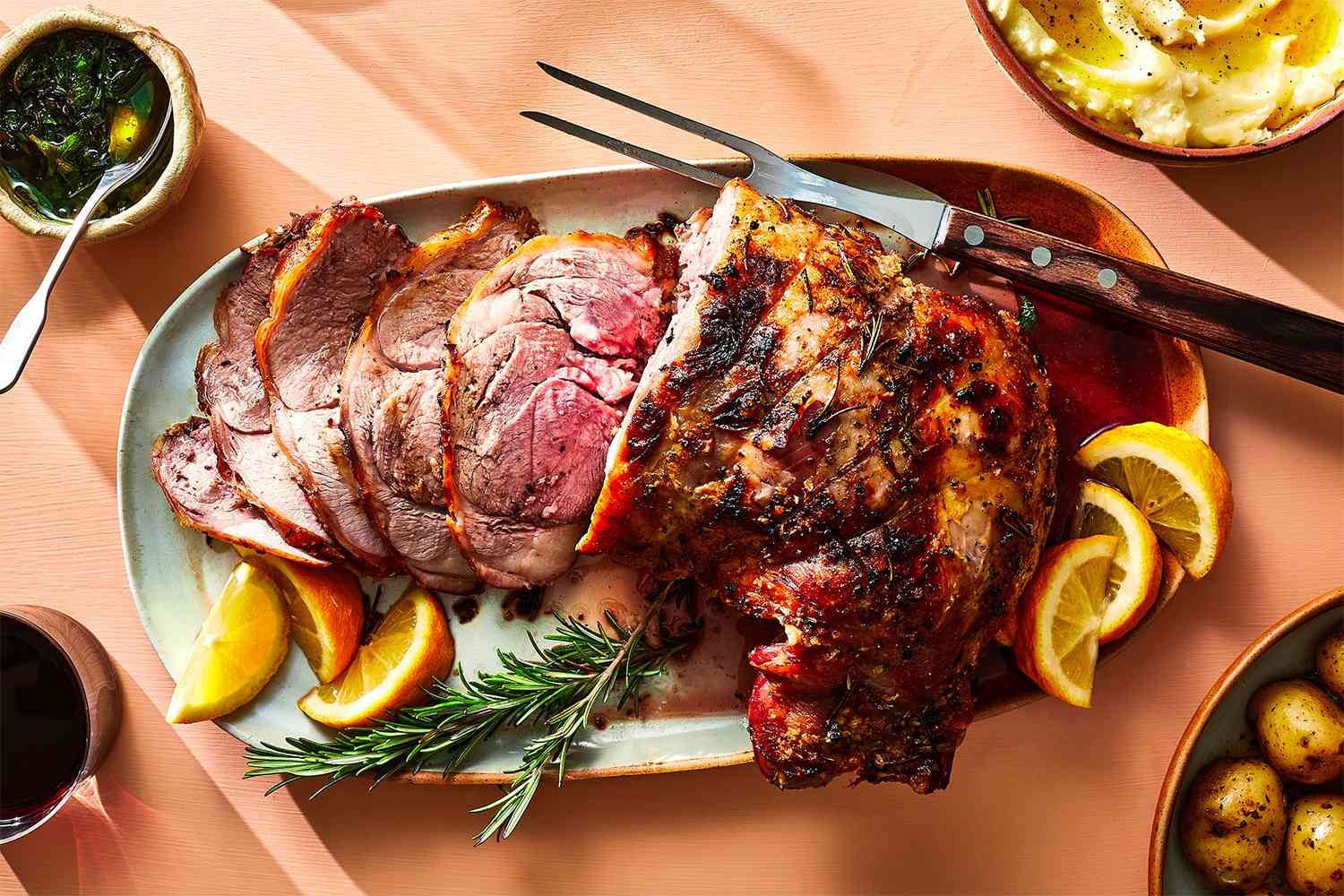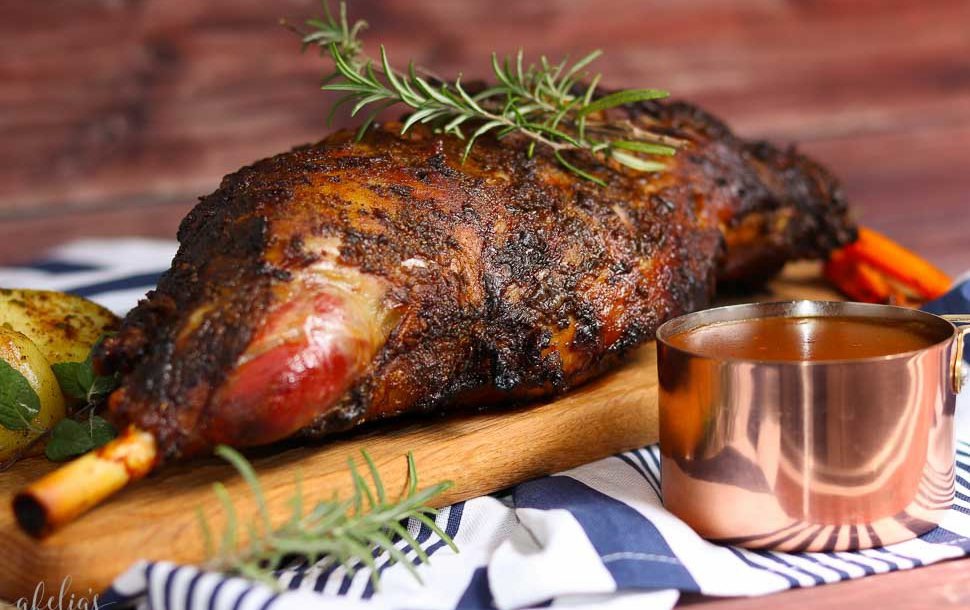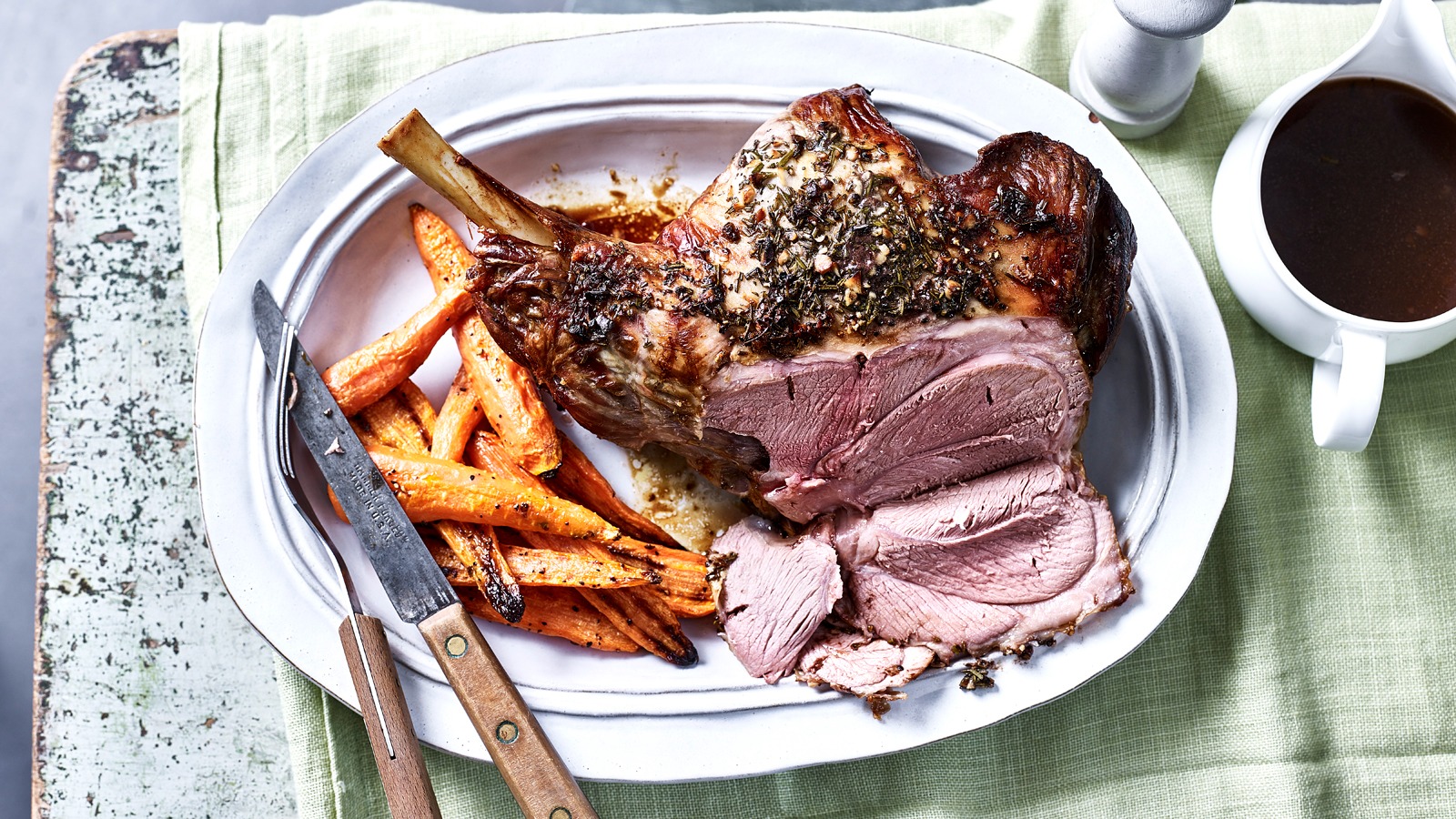Whether you are a longtime lamb lover or a beginner, this classic leg of lamb recipe will delight you. Marinate the lamb in a citrus and rosemary marinade, fry outside and fry slowly until tender.
The most important thing when cooking a lamb roast is not to cook it for too long. The lamb tastes so wonderful in itself and is so naturally tender that it will certainly taste good as long as it is still a little pink inside.
How to cook a leg of lamb
There are some debates about which method gives the best results – slow cook on low heat all the time, or first fry on high heat, and then cook slowly. In his American cuisine, James Beard prefers the method of slow cooking at low temperatures (he rubs the roast with salt and pepper and cooks it all the time at 325 ° F.).
We usually achieve excellent results with the cooking method, starting at high temperature, and then dropping the temperature, which is the method described in the following recipe.
If you use the burning method, you will have extremities that are done better, and when you approach from the inside, less often. This way you have a variety to serve the guests.
Another point where there are very different opinions is the internal temperature, which constitutes “medium rare”. I have seen references ranging from 120° to 145°F.
For this roast, I remove it to 125 ° F. While it is resting, the internal temperature continues to increase by a few points while the meat continues to cook.
Using a meat thermometer

We like our roast leg of lamb on the rare side of Medium Rare, and this roast was made perfectly to our taste. Of course, an accurate meat thermometer is essential, and it helps to insert the meat thermometer into the deep interior of the roaster in different places to get a good reading.
A great way to track how the roast is cooked is to use a remote thermometer. This way you can determine when the roast is ready without having to open the oven door, thereby avoiding the resulting heat loss.
Let the lamb roast at room temperature before cooking
The instructions for this leg of lamb recipe assume that you leave the roast at room temperature for an hour or two before frying. If you take a roast and cook it directly from the refrigerator, then cooking will take longer.
Other herbs and spices for roast lamb
Thyme and rosemary are great companions for lamb meat, but the earthy flavor of roast lamb goes well with a variety of other flavors. Oregano, sage, Tarragon, basil or even mint are good companions. A variety of chili powder, mustard, cumin or coriander powder are also beautiful additions.
Lamb with Bone or without Bone? What you need to know
Each cut Of lamb is suitable for this recipe. However, if you opt for a boneless lamb, ask your butcher to tie your roast with butcher’s tPlonk to get a uniform shape. Cooking lamb with bones takes a little longer (about 20 extra minutes for a 6-pound roast), because the BONE acts as an insulator.
What to do with the remains of lamb legs
Leftover lamb can be stored for up to 3 days in the refrigerator and up to 2 months in the freezer. But why not use the leftover roast to breathe new life into your lamb in a lamb curry, spring Lamb stew or lamb Corma?
Great side dishes for roasted leg of lamb
Here are some side dishes that you can prepare with your leg of lamb, as well as sauces that you can use to serve them:
- Roasted new potatoes
- Winter squash roasted with coriander Chimichurri
- Grilled Brussels sprouts with pomegranate balsamic glaze
- Popovers
- Mint With Chimichurri Sauce
- Mint jelly
The Marinade we used for this roast comes from my friend Suzanne and works pretty well. A simpler Marinade made from rosemary, extra virgin olive oil, garlic, pepper and lemon juice would do. You can also make tiny slices in the surface of the roast and put chopped herbs and garlic shards.
If you are cooking the roast directly in a frying pan, start the roast at 450 °F. after 20 minutes, reduce the heat to 325 ° F.
Ingredient
For the Marinade

- 1/2 cup orange juice
- 1 cup white Plonk
- 3 garlic cloves, chopped
- 2 teaspoons fresh thyme (or 1 teaspoon dried thyme)
- 2 tablespoons chopped fresh rosemary (or 1 tablespoon dried rosemary)
- 1/4 Teaspoon Freshly ground pepper
- For The roast lamb
1 (6 pounds) leg of lamb, with bone in or boneless (a boneless leg must be tied by a butcher with a kitchen cord)
Salt and freshly ground black pepper
Method
Making the Marinade:
Mix the Marinade ingredients in a blender, just a few pulses until well mixed.
Marinate the lamb:
Place the lamb and Marinade in a plastic bag. Push as much air out of the bag as possible and seal it. Wrap it again with another plastic bag so that the pickled Lamb does not escape.
Marinate in the refrigerator for several hours or overnight.
Remove the lamb that is still in its marinade bag from the refrigerator for at least an hour (preferably two) before putting it in the oven. This helps to bring the lamb closer to room temperature before frying.
Preheat the Oven:
Preheat the oven to 425 ° F arrange two grids in the oven – a middle grid to hold the lamb and a lower grid to hold a frying pan with which you can catch the drops.
Note that this arrangement of grills and stoves, where the roast is located directly on the oven rack, creates a natural convection of heat in the oven, which makes the roast cook faster than if it were cooked according to the traditional method in a grate in a frying pan.
Season the lamb and put it in the oven:
Remove the roast lamb from the marinade bag (you may want to temporarily place the lamb in another pan so that it is less messy). Blot the Marinade from the lamb with paper napkins.
Season all sides of the frying pan generously with salt and pepper. Arrange the fried fat with the side up to melt the fat in the meat while the lamb is cooking.
Place the roast directly on the center rack of the oven. Place a frying pan on a separate grate, which is located a rung lower to catch the drops. You can also add a little water to the bottom pan so that the drops fall into the water instead of burning in the hot pan and smoking your kitchen.
Roast lamb:

Fry at 425°F for 20 minutes. Then reduce the heat to 300 °F and fry for another 40 minutes (for a 6-pound roast without bones) to 60 minutes (for a 6-pound roast with bones). When cooking a roast with bones, the BONE acts as an insulator and requires a longer cooking time than a roast without bones.
Usually estimate 10-13 minutes per pound for the entire cooking time (for rarely), including the first 20 minutes on high heat. (Suppose you let the roast sit for an hour or two before you put it in the oven. If it comes straight out of the refrigerator, cooking will take longer.)
If you are cooking the roast directly in a frying pan, start the roast at 450 °F. after 20 minutes, reduce the heat to 325 ° F.
The shape of the frying also has an influence on the cooking time. Our roast was quite long and thin, so it cooked quite quickly. A thicker roast can last longer than expected.
Cook until medium rare:
About 20 minutes before you expect the roast to be ready, check the roast with a meat thermometer. Note that every time you open the oven door, you need about 10 minutes to bring the oven back to temperature, which slows down the cooking process. So do not check too often or use a meat thermometer removed.
Remove the roast from the oven anywhere from 125°F to 135°F For Medium rare. Lamb should never be cooked well, otherwise it will be too dry.
Let the Roast rest:
Let stand for 25-30 minutes before cutting (so that the juices do not all run out when cutting). Cut the kitchen cord and cut it against the grain of the meat with a sharp knife, slices 1/2 inch thick.
Collect the drops for sauce or Gravy:
While the roast is resting, use a metal spatula to scrape off the drops in the pan. Use the drops to make a sauce, or use only the drops themselves to serve with the lamb.
Serve with a little mint chimichurri or homemade mint jelly.

